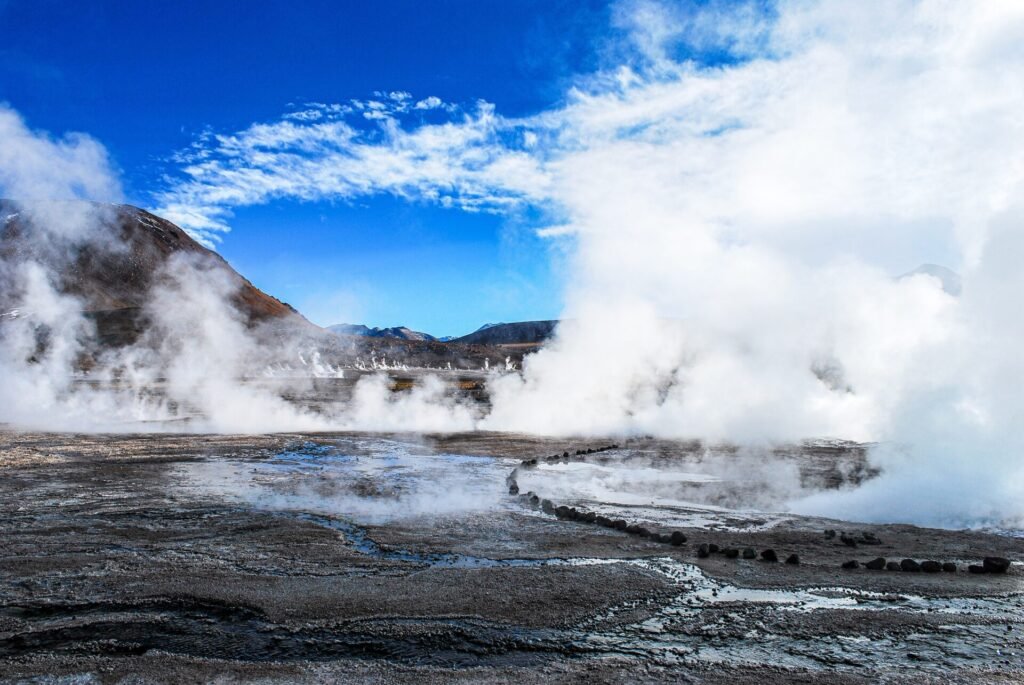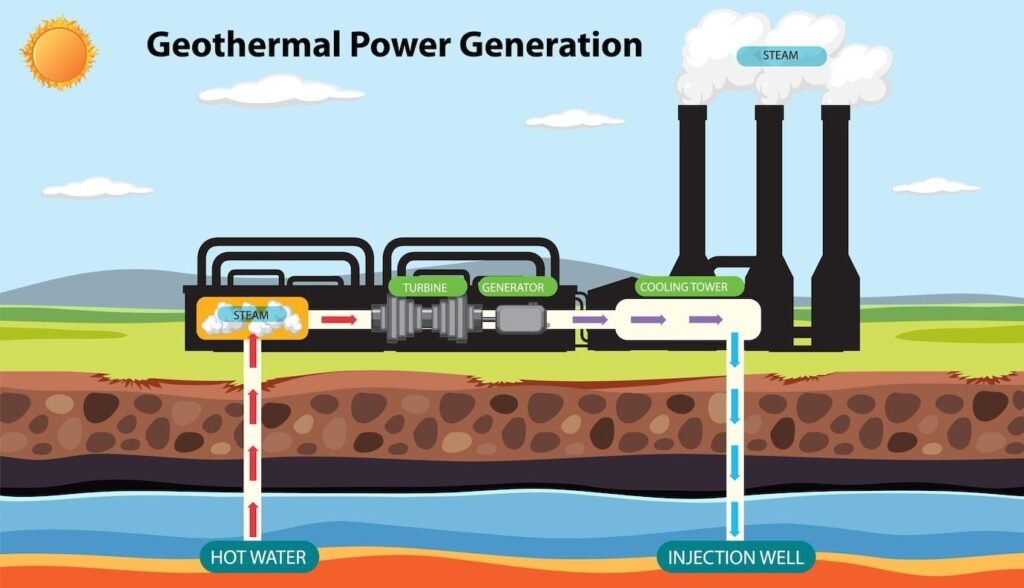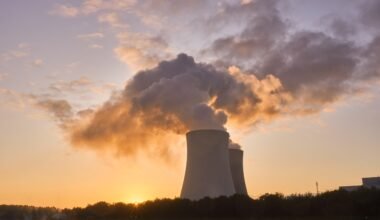Geothermal energy is a powerful and sustainable source of renewable energy that has the potential to revolutionize the way we generate electricity and heat our homes. This article will explore the various aspects of geothermal energy, including how it works, its advantages, its impact on the environment, and its future potential.

How Geothermal Energy Works
Geothermal energy harnesses the heat stored beneath the Earth’s surface to generate electricity. This heat is derived from the radioactive decay of minerals deep within the Earth. In areas with high geothermal potential, wells are drilled into the ground to access the hot water and steam that reside in geothermal reservoirs. This steam is then used to power turbines, which generate electricity. In locations where the temperature is not high enough to produce steam, a binary cycle power plant is used, where the heat from the geothermal fluid is transferred to a working fluid, which then drives a turbine.

Advantages of Geothermal Energy
One of the great advantages of geothermal energy is that it is available 24/7, unlike solar or wind power, which are dependent on weather conditions. Geothermal power plants can operate continuously, providing a reliable and consistent source of electricity.
Furthermore, it is a clean and renewable energy source. Unlike fossil fuels, geothermal energy does not produce greenhouse gas emissions or air pollutants when generating electricity. This makes it a vital component in reducing our carbon footprint and combating climate change.
Another advantage of geothermal energy is its longevity. Geothermal reservoirs can last for decades or even centuries, providing a stable and reliable source of energy. Additionally, geothermal power plants have a small land footprint compared to other renewable energy sources such as solar or wind farms, making them suitable for both urban and rural areas.
Geothermal Energy as a Renewable Solution
Geothermal energy has the potential to play a significant role in addressing our current energy challenges. As the world seeks to transition away from fossil fuels and reduce greenhouse gas emissions, renewable energy sources like geothermal are becoming increasingly important.
By investing in geothermal energy, we can diversify our energy portfolio and reduce our dependence on non-renewable resources. Geothermal energy can provide a stable and continuous power supply, reducing our reliance on intermittent energy sources such as solar and wind. Furthermore, geothermal energy can be harnessed both for electricity generation and direct heating, making it a versatile and multifaceted solution.
Geothermal Energy vs Other Renewable Energy Sources
When comparing geothermal energy to other renewable energy sources, it stands out for several reasons. Unlike solar and wind power, which are dependent on weather conditions, geothermal energy is not affected by fluctuations in sunlight or wind speed. This reliability makes geothermal energy a viable option for baseload power, which is the minimum amount of power required to meet the constant demand.
Additionally, geothermal energy has a smaller environmental impact compared to other renewable sources. Solar and wind farms often require large tracts of land and can disrupt ecosystems, while geothermal power plants have a smaller footprint and can be located underground or in urban areas.
Geothermal Energy and its Impact on the Environment
The environmental benefits of geothermal energy are significant. As a clean and renewable energy source, geothermal power plants emit minimal greenhouse gases and pollutants. This reduces air pollution and helps combat climate change.
Geothermal energy also has a minimal impact on water resources. While geothermal power plants use water to generate electricity, the water is recycled within the system, minimizing water consumption. Additionally, geothermal energy does not produce toxic waste or hazardous materials, unlike some other forms of energy generation.
Geothermal Energy Projects Around the World
Geothermal energy projects are being implemented around the world, showcasing its global potential. One notable example is Iceland, where geothermal energy provides over 70% of the country’s primary energy needs. Iceland’s volcanic landscape makes it an ideal location for harnessing geothermal energy, and the country has successfully integrated it into its energy infrastructure.
Other countries, such as the United States, the Philippines, and Kenya, have also made significant investments in geothermal energy. These countries recognize the economic and environmental benefits of geothermal energy and are actively exploring its potential.
Challenges and Limitations of Geothermal Energy
While geothermal energy has numerous advantages, it also faces certain challenges and limitations. One significant limitation is the geographical constraint. Geothermal energy is only viable in areas with high heat flow, which limits its availability to specific regions. Additionally, drilling deep wells for geothermal exploration can be expensive and technically challenging.
Another challenge is the potential for induced seismicity, which can occur when injecting or extracting fluids from the geothermal reservoir. However, with proper monitoring and regulation, the risk of induced seismicity can be minimized.
Geothermal Energy in Residential and Commercial Applications
Geothermal energy is not limited to large-scale power generation. It can also be utilized in residential and commercial applications. Geothermal heat pumps are increasingly being used to heat and cool buildings. These systems utilize the stable underground temperatures to efficiently heat or cool a space, reducing energy consumption and costs.
In addition to heating and cooling, geothermal energy can also be used for direct heating, such as in hot water systems. This reduces the reliance on fossil fuels for heating purposes and further contributes to a sustainable future.
The Future of Geothermal Energy
The future of geothermal energy is promising. As technology continues to advance, geothermal power plants are becoming more efficient and cost-effective. Improved drilling techniques and enhanced reservoir modeling are enabling the development of geothermal resources in previously untapped areas.
Furthermore, research and development efforts are focused on unlocking the potential of enhanced geothermal systems (EGS). EGS involves creating artificial geothermal reservoirs by injecting water into hot but impermeable rocks. This technology has the potential to significantly expand the availability of geothermal energy and make it accessible in regions with lower heat flow.
Conclusion
Geothermal energy is a renewable solution for a sustainable future. Its clean and reliable nature makes it a valuable contributor to the global energy transition. By harnessing the Earth’s natural heat, we can reduce greenhouse gas emissions, combat climate change, and create a more sustainable energy future for generations to come. Investing in geothermal energy is not only an investment in clean power but also an investment in a healthier and more sustainable planet. So let’s embrace geothermal energy and pave the way for a brighter future.








